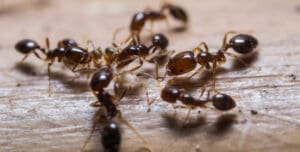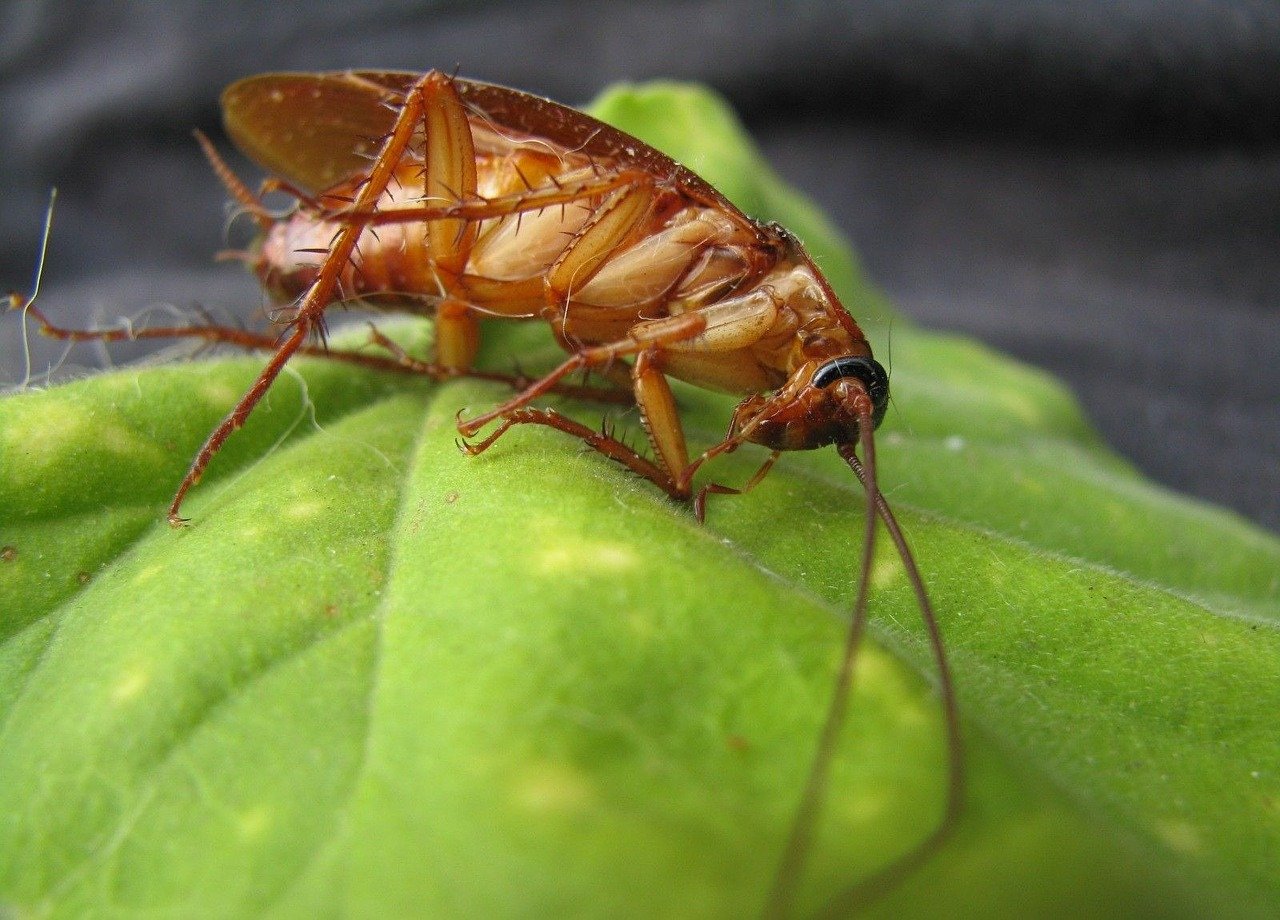Cockroach infestations are a common household problem, posing health risks and nuisances. What is a sign of cockroach infestation? Early detection is paramount in preventing these resilient pests from establishing a foothold. This article explores the signs of a cockroach infestation, health hazards, and the critical role of timely intervention for effective and lasting control.
Physical Signs
The first step in cockroach control is identifying the signs of a cockroach infestation. Cockroach infestations often manifest through distinct physical signs. First, sightings of live cockroaches, especially during the day, indicate a significant problem. Typically, seeing one cockroach does not necessarily indicate an infestation, unless it is spotted during daylight hours. Roaches are nocturnal, so their daytime presence signals a dense population. Second, the presence of droppings resembling black pepper or coffee grounds in and around food storage areas, behind appliances, and in dark corners is a clear indication. Additionally, cockroach egg cases, known as oothecae, can be found in hidden spaces. A musty or oily odor may also accompany an infestation, as roaches release pheromones. Stains or smears on surfaces result from the roaches' constant contact with these areas. Shed exoskeletons, particularly in areas they frequent, indicate their rapid reproduction and growth. Lastly, damage to paper products or fabric, as roaches feed on these materials, is another tangible sign of infestation.Unusual Behavior
Cockroaches exhibit unique behavior that aids their survival. Primarily nocturnal, they are most active during the night, seeking food and water when it's dark. This behavior helps them avoid predators and human interference. Cockroaches are adept at finding secluded hiding places during the day, often in cracks, crevices, or dark, confined spaces. They prefer warm and humid environments, such as kitchens and bathrooms, where they can thrive.Remarkably adaptive, cockroaches can flatten their bodies to squeeze into tight spaces and quickly navigate through narrow gaps. Their agile movements allow them to escape danger efficiently. Furthermore, cockroaches display thigmotaxis, a behavior where they prefer contact with surfaces on all sides, giving them a sense of security and facilitating their navigation in the dark. The ability to remain hidden during daylight hours and exploit the cover of darkness for their activities contributes to the persistence of cockroach infestations.Common Species of Cockroaches
The following are a few of the more common species of cockroaches:- German Cockroach (Blattella germanica):
- Small size (about 1/2 to 5/8 inch).
- Light brown to tan color with two dark parallel stripes on the pronotum.
- Rapid reproduction, making infestations challenging to control.
- American Cockroach (Periplaneta americana)
- Larger size (about 1.5 to 2 inches).
- Reddish-brown color with a distinctive yellowish figure-eight pattern on the pronotum.
- Typically found in dark, damp areas like basements and sewers.
- Oriental Cockroach (Blatta orientalis):
- Dark brown to black in color.
- Shiny appearance with a robust body.
- Prefers cool, damp environments and often found in basements and crawl spaces.
- Brown-banded Cockroach (Supella longipalpa):
- Smaller size (about 1/2 inch).
- Light brown with distinctive dark bands across the wings and abdomen.
- Prefers warm, dry areas and tends to infest high spaces, like upper cabinets.
Species identification is important when it comes to cockroach control because different species have varying behaviors and habitats, requiring specific control measures. Knowing the species causing the infestation allows for targeted treatments like selecting baits that appeal to their preferences, identifying various hiding spots, and tailoring preventative measures. Health Risks Associated with Cockroach Infestations
The presence of cockroaches in indoor environments poses serious health hazards. These pests are notorious for carrying and transmitting various pathogens, including bacteria like Salmonella, E. coli, and Staphylococcus. This significantly increases the risk of foodborne illnesses, as they often inhabit areas associated with food preparation.Furthermore, cockroach infestations release allergens found in their feces, saliva, and shed skin, which can trigger allergic reactions. Exposure to these allergens may lead to skin rashes, itching, and, more critically, respiratory problems. The airborne particles from cockroach debris are known to worsen asthma symptoms and can cause wheezing, coughing, and difficulty breathing. This is particularly concerning for individuals with pre-existing respiratory conditions, as cockroach allergens have been linked to the development and exacerbation of asthma.Preventing Cockroach Infestations
Getting rid of cockroach infestations involves a combination of cleanliness, sealing entry points, and reducing attractants:- Maintain Cleanliness:
- Regularly clean and sanitize kitchens, especially areas around appliances and under sinks.
- Eliminate food crumbs and spills promptly, and store food in airtight containers.
- Seal Entry Points:
- Seal cracks, gaps, and crevices in walls, floors, and around windows and doors using caulk.
- Ensure tight-fitting screens on windows and doors to prevent roaches from entering.
- Eliminate Hiding Places:
- Declutter and minimize potential hiding spots by organizing storage areas.
- Seal and repair any water leaks, as cockroaches are attracted to moisture.
- Regular Inspections:
- Conduct routine inspections of dark and secluded areas, such as basements and crawl spaces.
- Check incoming items for signs of cockroach activity, especially in packages and bags.
- Proper Waste Management:
- Dispose of garbage regularly and use sealed trash cans.
- Keep outdoor bins away from the house and ensure they have tight-fitting lids.
- Natural Repellents:
- Use natural repellents like bay leaves, cucumber slices, or a mixture of boric acid and sugar in areas prone to infestation.
- Professional Pest Control:
- If infestation occurs or is a recurring problem, consider professional pest control services for effective and targeted treatment.
Professional Assessment
Hiring a cockroach control expert is crucial for confirming and effectively treating a cockroach infestation due to their expertise, tailored approach, and use of specialized tools and chemicals. Professionals possess the knowledge to accurately identify the cockroach species and assess the extent of the infestation, providing a comprehensive understanding that guides the treatment strategy. Attempting do-it-yourself solutions may not address the root cause of the problem, leading to incomplete eradication and potential health risks. Pest control experts implement integrated pest management, combining chemical treatments with sanitation and exclusion measures for a holistic approach.The experts at Twin-Boro utilize targeted and environmentally safe insecticides, ensuring the effective elimination of cockroaches while minimizing risks to residents, pets, employees, and patrons. Additionally, we use advanced techniques such as baiting, dusts, and residual sprays, addressing the infestation at its source and preventing future recurrence. Ultimately, hiring Twin-Boro ensures a quicker and more efficient resolution of any cockroach infestation, safeguarding the health and well-being of occupants and preventing the potential spread of diseases and allergens associated with these resilient pests. For information about the services we offer, visit our residential pest control and commercial pest control pages.


